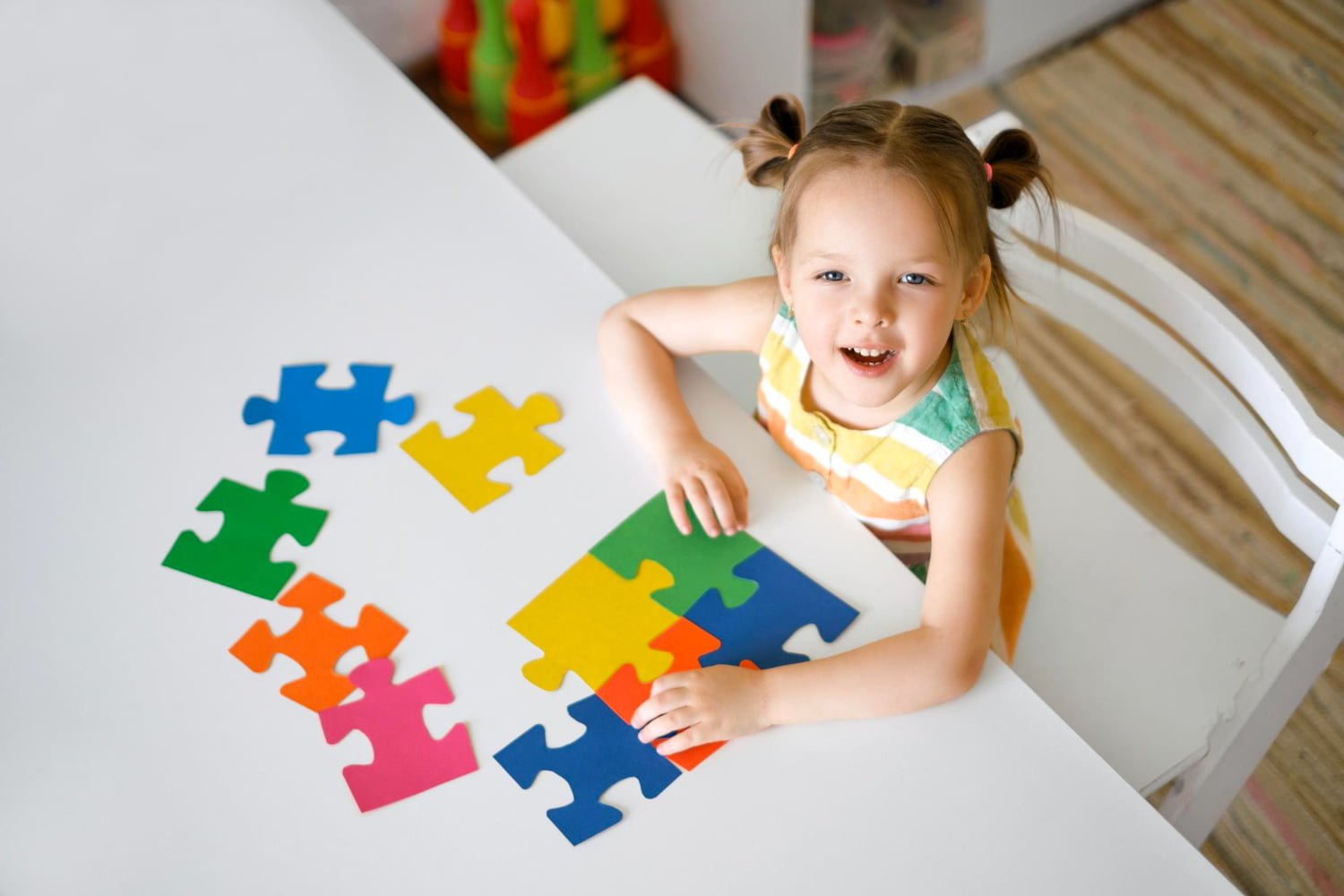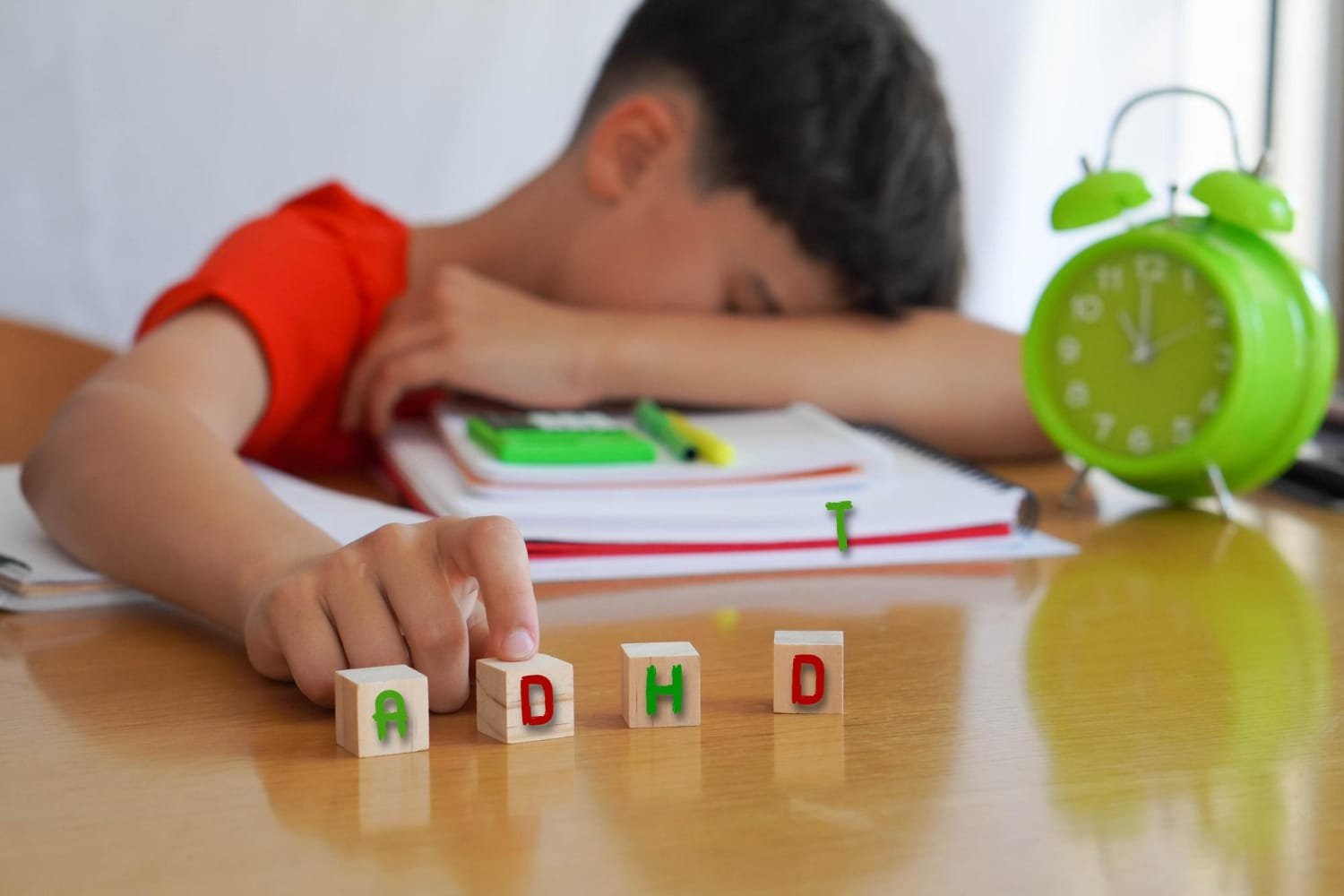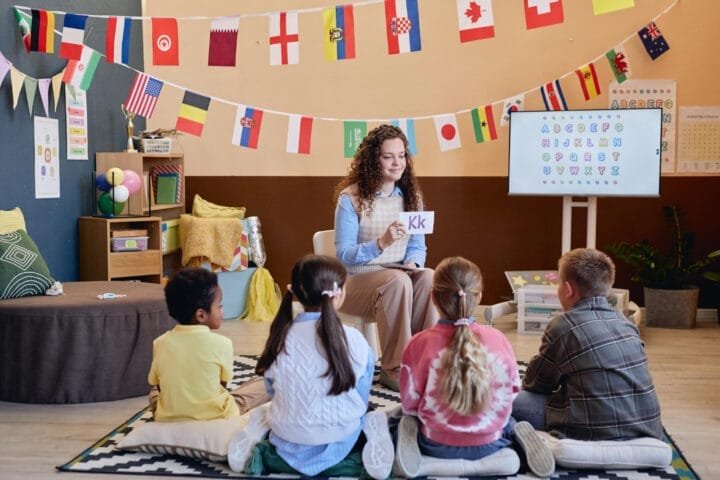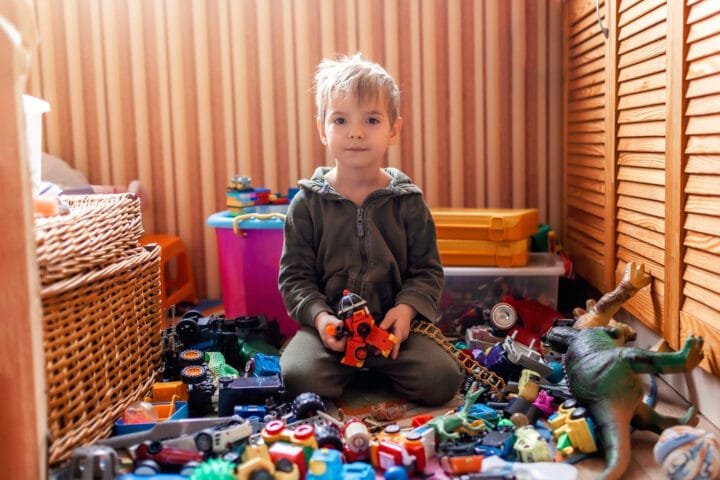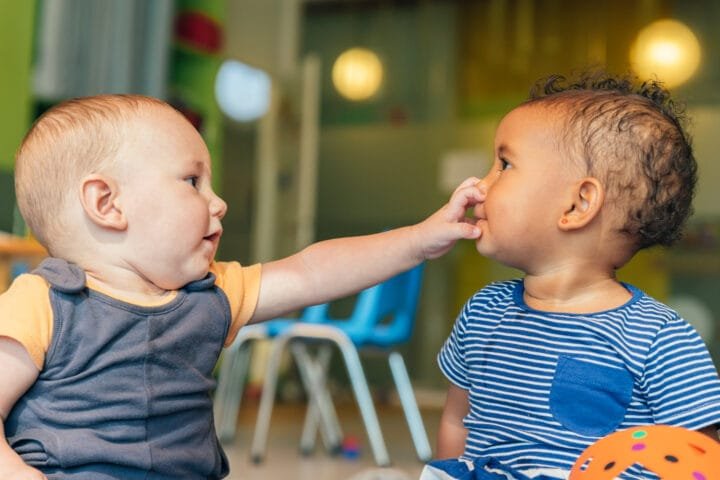Decoding the Silence: Why is My Kid Suddenly a Clam Around Certain People?
Ever been there? You are chatting with your neighbor, and your usually bubbly child, the one who sings the ABCs at the top of their lungs in the shower, suddenly turns into a silent statue. Clams up tighter than a bank vault. Or it’s at family dinners. Your normally chatty tween, who usually regales everyone with tales of schoolyard drama, retreats into their shell like a startled turtle whenever certain relatives enter the room. It’s perplexing. It leaves you wondering, “Why does someone become quieter around certain people?” and particularly, “What’s going on with my kid?”. We parents analyze everything. It’s like we’ve got a Ph.D. in overthinking. This article is our journey, yours and mine, to unravel the mystery behind those moments of unexpected silence. Let’s decode it together. There will be some laughs along the way. Maybe even a few “Aha!” moments, too.
The Developing Child: Age and Stage Play a Role (Developmental Factors)
It’s a wild ride watching these little humans grow. One minute, they’re clinging to your leg; the next, they’re rolling their eyes and muttering about needing their “space.” However, understanding their developmental stage can shed some light on why they might clam up around sure folks.
Toddlerhood: Stranger and Separation Anxiety
Remember the days when your little one would bury their face in your shoulder whenever a new person approached? Ah, the joys of stranger anxiety! Around 6 to 8 months, babies start to recognize familiar faces and may become wary of strangers.
- Stranger Danger is Real: It’s a survival instinct, really. They’re learning who’s safe and who’s a potential threat.
- Separation Blues: Then there’s separation anxiety, which often peaks around 10 to 18 months. Your toddler might become quiet and withdrawn when separated from you, even if it’s just in another room. I remember once leaving my son with my sister; he adored her. But when I came back, he was as quiet as a mouse in the corner, poor thing. He wouldn’t let me put him down for an hour!
- Easing the Transition: Introduce new people gradually. Let your toddler observe from a safe distance before expecting them to interact. Also, a consistent routine can work wonders for separation anxiety. Toddlers love predictability.
Preschool Years: Navigating the Social Landscape
Preschool is a whole new ball game. Suddenly, your little one is thrust into a world of social rules and expectations. They’re like little anthropologists trying to figure out the customs of this strange new tribe.
- The Pressure to Conform: Preschoolers are acutely aware of group dynamics. They might become quiet when they’re unsure of the rules or when they feel overwhelmed by the social scene. A recent study found that 40% of preschoolers experience some form of social anxiety.
- Learning the Ropes: They’re still learning how to share, take turns, and resolve conflicts. It’s a lot to process! There will be bumps. There will be mishaps.
- Building Social Skills: Role-playing can be a great tool. Practice different social scenarios at home, like introducing themselves or asking to join a game. I used to play “tea party” with my daughter; we’d pretend to be different guests. It really helped her.
Elementary School: The Rise of Self-Awareness
As kids enter elementary school, their self-awareness blossoms. They become more attuned to how others perceive them, which can sometimes lead to increased shyness or quietness.
- The Spotlight Effect: They start to realize that they’re being observed and evaluated by others. This can make them feel self-conscious and hesitant to speak up.
- Social Comparisons: They begin comparing themselves to their peers, which can trigger anxieties about fitting in or measuring up. Studies show that children as young as five can exhibit signs of social comparison.
- Boosting Self-Esteem: Encourage their interests and talents. Celebrate their efforts, not just their achievements. Remind them that everyone has strengths and weaknesses. It is okay to be different.
Adolescence: The Complexities of Identity Formation
Ah, the teenage years. A rollercoaster of emotions, hormones, and existential angst. It’s a time of intense self-discovery, which can sometimes manifest as quietness or withdrawal.
- Finding Their Voice: Teens are figuring out who they are and what they believe in. They might become quiet as they process their thoughts and feelings. Sometimes, they want to listen.
- The Need for Space: They’re also craving independence and may pull away from family as they explore their own identity. It is not personal, even though it may feel like it.
- Keeping the Lines Open: Respect their need for privacy but continue to offer support and understanding. Let them know you’re there for them, even if they don’t always want to talk.
Personality Predispositions: It’s Just Who They Are (Personality Traits)
Sometimes, the reason a child is quiet around certain people has less to do with the situation and more to do with their inherent personality.
Introversion vs. Extroversion: Understanding Temperament
Let’s clear up a common misconception: introversion is not the same as shyness. Introverts gain energy from spending time alone, while extroverts are energized by social interaction.
- The Power of Quiet: Introverted children might be quiet because they’re recharging their batteries or simply enjoying their own company. It doesn’t mean they are unhappy.
- Respecting Their Needs: Don’t force them to be the life of the party. Please provide them with opportunities for quiet activities and alone time. About 30-50% of the population is estimated to be introverted. There are many of us.
- Celebrating Differences: Both introverts and extroverts have valuable strengths. Please help your child appreciate their unique temperament.
The Highly Sensitive Child: Processing the World Differently
Some children are more sensitive to sensory input and emotional nuances than others. These “highly sensitive children” might become quiet when they feel overwhelmed.
- Sensory Overload: Loud noises, bright lights, and crowded spaces can be too much for them to handle. They may shut down as a way to cope. Dr. Elaine Aron’s research suggests that 15-20% of the population may be highly sensitive.
- Emotional Sponges: They tend to absorb the emotions of those around them, which can be exhausting. Have you noticed this with your child?
- Creating a Calm Oasis: Provide them with a quiet space where they can retreat when they need a break. Teach them relaxation techniques, like deep breathing.
The Socially Cautious Child: Testing the Waters
Some children are naturally more cautious and prefer to observe a situation before jumping in. It’s like they’re dipping their toes in the water to check the temperature.
- The Observers: They might be quiet because they’re gathering information and assessing the social landscape. It is how they learn.
- Patience is a Virtue: Don’t pressure them to participate before they’re ready. Let them take their time. They will join in when they are ready.
- Gentle Encouragement: Offer gentle prompts, like, “Would you like to say hello to Grandma?” but respect their decision if they decline.
III. Social Dynamics at Play: Reading the Room (Interpersonal Factors)
Sometimes, a child’s quietness is a direct response to the social dynamics in a particular situation. They’re like little social barometers, picking up on subtle cues and adjusting their behavior accordingly. This reminds me of times when I was young; why does someone become quieter around certain people, I would wonder.
The Authority Figure Effect: Respect, Fear, or Uncertainty?
Children often behave differently around authority figures such as teachers, coaches, or even older relatives. Their quietness might stem from respect, fear, or simply not knowing how to interact with them.
- The Power Imbalance: Children are aware of the power dynamics at play. They might be hesitant to speak up for fear of saying the wrong thing or getting in trouble.
- Mixed Signals: Sometimes authority figures can be intimidating without meaning to be. Their tone of voice, body language, or even just their physical presence can make a child feel small. I know I’ve been guilty of this without realizing it.
- Bridging the Gap: Encourage open communication between your child and the authority figures in their life. Help them understand that it’s okay to ask questions and express their needs.
Peer Group Pressures: Navigating the Social Hierarchy
As children get older, they become increasingly aware of social hierarchies and the pressure to fit in. This can lead to quietness in situations where they feel unsure of their standing or afraid of being judged.
- The Popularity Game: Kids can be surprisingly astute at figuring out who’s “in” and who’s “out.” They might clam up around certain peers to avoid attracting negative attention.
- Fear of Rejection: The fear of being excluded or ridiculed can be paralyzing. It’s easier to stay quiet than to risk being ostracized. A staggering 70% of young people say they have experienced social rejection.
- Building Social Resilience: Teach your child that true friendship is based on acceptance, not conformity. Encourage them to be themselves, even if it means going against the crowd.
New Faces, New Places: The Challenge of Unfamiliarity
It’s natural for children to be more reserved in new social situations or around unfamiliar people. They’re entering uncharted territory and need time to adjust.
- The “Stranger Danger” Instinct: Even if they’re past the toddler stage, that innate wariness of strangers can still linger. It is okay. It is normal.
- Social Overwhelm: New environments can be overwhelming, especially for introverted or sensitive children. Give them time.
- Easing the Transition: Prepare them in advance for new situations. Talk about who they’ll meet and what to expect. Role-play introductions and conversations.
Family Ties: Understanding Dynamics at Home
Sometimes, the reason a child is quiet around certain people hits closer to home. Family dynamics can be complex, and children are often more perceptive than we give them credit for.
- Conflict Avoidance: If there’s tension or conflict between family members, a child might become quiet as a way to avoid making things worse or feeling caught in the middle.
- Unspoken Rules: Every family has its own set of unspoken rules and communication patterns. A child might be quiet around certain relatives because they’re unsure of how to navigate those dynamics. My own family was like this.
- Creating a Safe Space: Foster open and honest communication within your family. Let your child know that it’s okay to express their feelings, even if they’re negative. It is healthy to express your feelings.
When Silence Signals a Concern: Identifying Potential Problems (Potential Concerns)
While quietness is often a normal part of child development, there are times when it can signal a deeper issue. It’s essential to be attuned to these potential red flags. As parents, we need to be aware.
Social Anxiety: Beyond Shyness
Social anxiety is more than just shyness. It’s an intense fear of social situations that can significantly interfere with a child’s daily life.
- Physical Symptoms: Social anxiety can manifest in physical symptoms like stomachaches, headaches, sweating, and trembling. Fifteen million American adults have social anxiety, and it often begins in childhood.
- Avoidance Behaviors: Children with social anxiety might go to great lengths to avoid social situations or speaking in front of others. This can really impact their lives.
- Seeking Professional Help: If you suspect your child has social anxiety, don’t hesitate to reach out to a mental health professional. Early intervention is key.
Selective Mutism: When Talking is a Struggle
Selective mutism is an anxiety disorder where a child is unable to speak in specific social settings despite being able to talk generally in others.
- Specific Triggers: Children with selective mutism might be able to talk freely at home but become utterly silent at school or around unfamiliar people. This can be hard on them and their families.
- Misconceptions: It’s often mistaken for shyness or defiance, but it’s actually a form of anxiety. A child cannot help it.
- Specialized Treatment: Selective mutism requires specialized treatment, often involving a combination of therapy and behavioral interventions.
Bullying and Intimidation: The Sound of Silence
Sadly, sometimes, a child’s silence is a sign that they’re being bullied or intimidated.
- Fear and Shame: Victims of bullying often feel too afraid or ashamed to speak up. They may think it is their fault.
- Changes in Behavior: Look for changes in your child’s mood, appetite, sleep patterns, or school performance. Over 20% of students report being bullied.
- Taking Action: If you suspect your child is being bullied, take it seriously. Talk to your child, their teachers, and school administrators. Document everything.
Underlying Medical or Developmental Conditions
In some cases, a child’s quietness might be related to an underlying medical or developmental condition.
- Hearing or Speech Difficulties: A child with a hearing impairment or a speech impediment might be reluctant to talk because they’re self-conscious or have difficulty being understood.
- Autism Spectrum Disorder: Children with autism often have difficulty with social interaction and communication. They may prefer to be alone or have trouble understanding social cues.
- Consulting Professionals: If you have any concerns about your child’s development, consult with your pediatrician or a specialist. It never hurts to ask.
Nurturing Communication: How to Support Your Quiet Child (Practical Strategies)
As parents, we want to do everything we can to help our children thrive. Here are some practical strategies for supporting your quiet child and fostering their social-emotional development. You are their most prominent advocate.
Creating a Safe and Supportive Environment
The foundation of healthy social-emotional development is a secure and loving home environment.
- Unconditional Love: Let your child know that you love and accept them, regardless of their personality or social style.
- Open Communication: Create a space where your child feels comfortable sharing their thoughts and feelings without fear of judgment. Use open-ended questions.
- Active Listening: When your child does talk, give them your full attention. Put down your phone, make eye contact, and really listen. Try to understand where they are coming from.
Building Social Confidence, One Step at a Time
Social skills, like any other skills, can be developed with practice and encouragement.
- Small Steps: Don’t push your child into overwhelming social situations. Start with small, manageable steps, like inviting one friend over for a playdate. Praise them for their efforts.
- Role-Playing: Practice social scenarios at home, like introducing themselves, joining a conversation, or dealing with conflict. This will help ease the anxiety.
- Positive Reinforcement: Celebrate their social successes, no matter how small. Positive reinforcement goes a long way.
Knowing When to Seek Professional Help
Sometimes, despite our best efforts, our children need professional support. It is okay to ask for help.
- Trust Your Gut: If you’re concerned about your child’s quietness, don’t hesitate to seek help. You know your child best.
- Finding Resources: Talk to your pediatrician, school counselor, or a mental health professional. There are many excellent resources available.
- Advocating for Your Child: Be your child’s advocate. Make sure they get the support they need to thrive. You are their voice.
Partnering with Educators and Caregivers
Collaboration is key to providing a consistent support system for your child.
- Communication is Key: Maintain open communication with your child’s teachers, caregivers, and other significant adults in their lives. Share information.
- Teamwork: Work together to develop strategies for supporting your child’s social-emotional well-being. You are a team.
- Consistency: Ensure that everyone is on the same page and using consistent approaches. Children thrive on consistency.
Conclusion
So, why does someone become quieter around certain people? As we’ve explored, the answer is multifaceted. It’s a tapestry woven with threads of development, personality, social dynamics, and sometimes underlying concerns. The journey of understanding our children is ongoing, filled with twists, turns, and the occasional “aha!” moment. It is not always easy. There will be bumps. It’s a journey we take together with these amazing little humans, learning as we go. And maybe their moments of silence are teaching us something, too. They’re inviting us to slow down, to listen more closely, and to appreciate the quiet power of simply being present.
Let’s embrace the silence, along with the chatter, and celebrate the unique individuals our children are becoming. In the end, it’s not about how loud they are but about how they feel, indeed, seen and loved.
Recommend Books
“Quiet: The Power of Introverts in a World That Can’t Stop Talking” by Susan Cain
- This book provides a deep dive into the nature of introversion and challenges the societal bias towards extroversion. It helps parents understand and appreciate the strengths of their introverted children and offers insights into why they might become quiet in specific social settings. It touches on how to raise an introverted child.
- What you’ll learn: You’ll gain a greater understanding of introverted personality traits, learn how to create an environment where introverted children can thrive, and discover strategies for helping them navigate a world that often favors extroversion.
- This book focuses on the trait of high sensitivity, which can often lead to children becoming overwhelmed and quiet in stimulating environments. It provides practical advice for parenting sensitive children and helping them manage sensory overload.
- What you’ll learn: You’ll learn how to identify if your child is highly sensitive, understand their unique needs, and develop strategies for supporting them in various situations, including social interactions. This book will give you great insight.
“Raising Your Spirited Child: A Guide for Parents Whose Child Is More Intense, Sensitive, Perceptive, Persistent, and Energetic” by Mary Sheedy Kurcinka
- Although not solely focused on quietness, this book addresses the challenges of parenting children who are more intense, sensitive, and persistent. These traits can sometimes manifest as social withdrawal or quietness, especially when a child feels overwhelmed or misunderstood. This book helps with understanding your child.
- What you’ll learn: You’ll gain a better understanding of your child’s temperament, learn how to reframe their challenging behaviors in a positive light, and discover practical strategies for managing their intensity and helping them develop social-emotional skills.
“Freeing Your Child from Anxiety: Powerful, Practical Solutions to Overcome Your Child’s Fears, Worries, and Phobias” by Tamar E. Chansky, Ph.D.
- This book explicitly addresses childhood anxiety, including social anxiety, which can be a significant cause of quietness around certain people. It offers practical, evidence-based techniques for helping children overcome their fears and build confidence. It provides excellent tips and advice.
- What you’ll learn: You’ll learn how to identify the signs of anxiety in your child, understand the different types of anxiety disorders, and implement effective strategies for managing anxiety in everyday situations.
- This book provides a framework for understanding how children’s brains develop and how that development impacts their behavior, including social interactions. It offers practical strategies for fostering emotional intelligence and resilience, which can help children navigate challenging social situations. It is full of helpful information.
- What you’ll learn: You’ll gain insights into the inner workings of your child’s brain, learn how to connect with them on a deeper level, and discover practical strategies for managing difficult emotions and behaviors, including those that might lead to quietness in social settings.
FAQs
It’s completely understandable to be curious about why your child clams up around certain people, especially someone significant, like a new partner. This is a big change for them. Children often need time to adjust to new family dynamics. Your child might be feeling uncertain about their place in this new situation or worried about how the relationship will affect their relationship with you. They might also be picking up on subtle cues or tensions that you’re not even aware of. It’s essential to be patient, give them space to adjust, and maintain open communication. Reassure them of your love and try to create opportunities for positive interactions between them and your new partner, but don’t force it.
Yes, this is quite common and usually not a cause for concern. School environments can be more socially demanding and structured than home. Children may feel more pressure to perform or conform to certain expectations in the classroom. At home, they likely feel more relaxed, secure, and free to be themselves. It’s also possible that your child is more introverted and needs time to recharge after a day of social interaction. However, suppose their quietness in school is accompanied by other signs of distress, like anxiety or academic difficulties. In that case, it’s always a good idea to talk to their teacher or a school counselor.
Unfortunately, yes, a child’s sudden quietness could be a sign of bullying. Children who are being bullied often withdraw socially and may be reluctant to talk about their experiences out of fear, shame, or embarrassment. It is essential to be vigilant. Look for other warning signs, such as changes in mood, sleep patterns, appetite, or a decline in school performance. They may not want to go to school. Try to create a safe and supportive environment where your child feels comfortable talking to you. If you suspect bullying, talk to your child’s teachers, the school principal, or the guidance counselor.
It’s natural to want to help your shy child become more comfortable in social situations. Start by accepting and validating their shyness. Let them know it’s okay to feel shy sometimes. Encourage small steps, like practicing simple social interactions at home, such as greeting someone or making eye contact. Role-playing can be a fun and effective way to build confidence. Avoid pushing them into overwhelming situations, and instead, gradually expose them to new social experiences at their own pace. Most importantly, celebrate their efforts and progress, no matter how small. Praise and encouragement are powerful tools.
While some quietness is usual, it’s essential to trust your instincts as a parent. If your child’s quietness is persistent, causes them significant distress, or interferes with their ability to function in daily life—such as making friends, participating in school, or enjoying activities—it’s a good idea to seek professional advice. Other red flags might include extreme social withdrawal, signs of anxiety or depression, or a sudden and dramatic change in behavior. Your pediatrician, a school counselor, or a child psychologist can help you assess the situation and determine if intervention is needed. Remember, you are your child’s best advocate.
Related Posts
